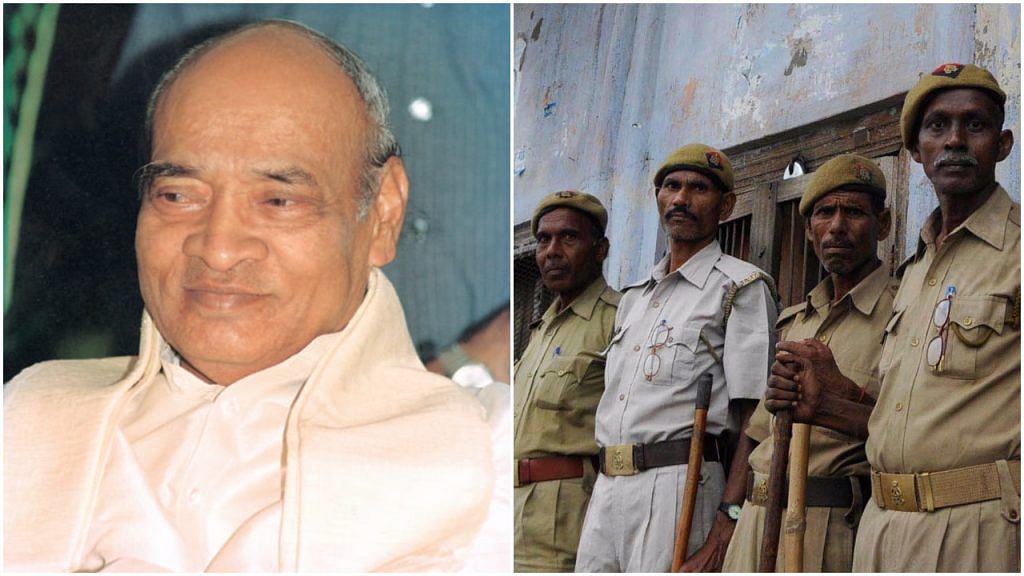Madhav Godbole, Home secy at the time of the demolition, says a contingency plan had been ready since July, but the final go-ahead ‘never arrived’.
New Delhi: The perception that the Union home ministry under S.B. Chavan couldn’t do enough to prevent the demolition of the Babri Masjid in Ayodhya on 6 December 1992 is false, the home secretary at the time, Madhav Godbole, has said.
The ministry had made plans to take over the disputed structure long before the incident, but Prime Minister P.V. Narasimha Rao failed to give the go-ahead to implement it, he told ThePrint.
“There was a difference of opinion between the home ministry and the Prime Minister in terms of anticipation of events in Ayodhya,” Godbole said. “We had recommended taking over the structure, followed by President’s Rule in Uttar Pradesh. This plan, unfortunately, was not politically accepted by the PM.”
Godbole said that he met the PM several times, but each time, he was asked to wait.
The plan
The plan was prepared soon after Hindu organisations and BJP leaders started kar seva on 9 July 1992. The plan was to first take control of the disputed site at midnight, a time when no one was around, followed by the dismissal of the state government and the imposition of President’s Rule.
“We had information that the state government was unlikely to act, and hence, the imposition of President’s Rule was imminent,” Godbole said.
The state government under BJP chief minister Kalyan Singh had already rejected the idea of deploying central paramilitary forces in Ayodhya. The home ministry then wrote a letter, recommending that at least the first ring of security around the disputed site should be of central paramilitary forces. But the state government rejected this too.
The home ministry then started working on a contingency plan. Based on its assessment, a large force of around 20,000 persons, comprising of CRPF, CISF and the RPF, was pooled from all over the country. A task force of senior officers visited Ayodhya several times to get familiar with the ground situation.
After everything was worked out, Godbole approached the home minister and the Prime Minister in the second week of November to get approval, with the takeover of the structure set for the night of 22 November. This would be done under Article 355 of the Constitution, which calls it the duty of the Union government to protect the state from any external aggression and internal disturbance.
Any action under Article 355 would have required Cabinet approval. Therefore, it was worked out that a late-night cabinet meeting would be called on the night of 22 November. In the same meeting, another proposal, to impose President’s Rule under Article 356, would be brought up and approved.
This would have been the first instance of the imposition of Article 355 and 356. “I was personally keen that it should be vetted by the law ministry. The law ministry had vetted it, and we had even kept a cabinet note ready,” said Godbole.
The order that never arrived
Godbole was certain that permission would be granted, and hence on 17 November, he asked two senior officers from the ITBP and the CRPF to move to Lucknow by train, so that further action could be taken at short notice.
“The Prime Minister changed his mind, and asked to wait for a few more days,” said Godbole. The two officers were asked to get down from the train at the next station, and return to Delhi by car.
Over the next few days, NSG commandos were kept ready to proceed to Faizabad by train, posing as civilians. But the plan would get delayed every day, waiting for the Prime Minister’s clearance.
On 24 November, Prime Minister Rao gave clearance for moving central forces to UP. The forces reached their designated places around Ayodhya by 26 November, waiting for a final order of deployment. “But that order never came,” said Godbole.
On 30 November, a meeting took place between Rao and Kalyan Singh at the former’s residence. The meeting ended without any outcome, and then Rao called Godbole to prepare a cabinet note to impose President’s Rule. But there was no Cabinet meeting for the next two days, and by the time Godbole could move the cabinet note on 6 December, the mosque had been demolished.
Godbole resigned from service on 23 March 1993, 18 months before he was due to retire. He then wrote a memoir, Unfinished Innings, published in 1996, in which he described the Ayodhya incident in great detail.
